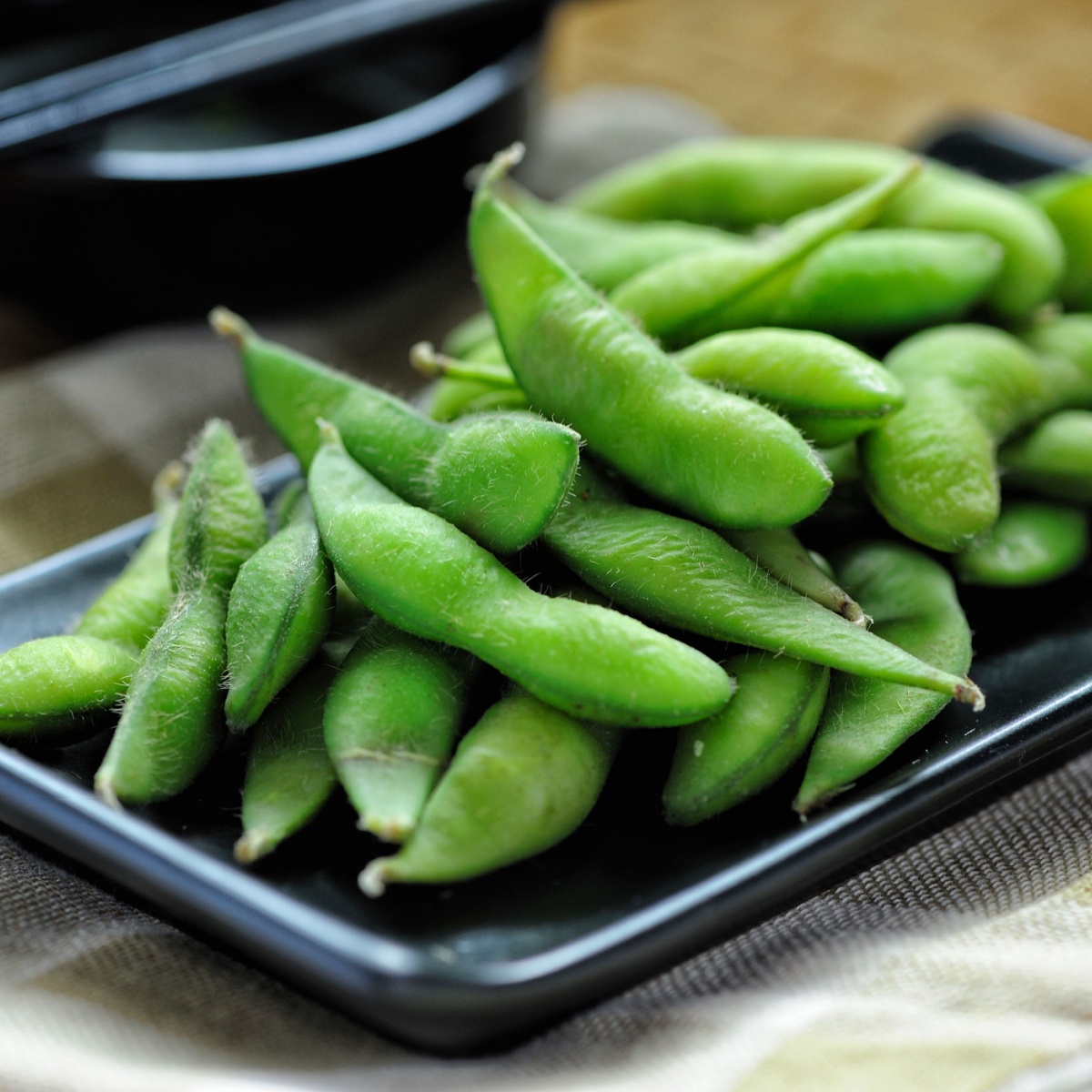
1. Edamame
Edamame is rich in dietary fiber, both soluble and insoluble, and Moody adds that "approximately 17 grams of protein and 8 grams of fiber are found in one cup of cooked edamame. These beans are also immature, so they contain more vitamin K and vitamin B9 than mature soybeans. Edamame is one of those foods that contains both types of fiber: soluble and insoluble, so it’s excellent at helping with smoother digestion."
2. Chickpeas
Their combination of fiber, prebiotics, protein, enzymes, anti-inflammatory properties, and essential nutrients makes them a valuable addition for promoting overall digestive health.
"There are a whopping 13 grams of fiber and 15 grams of protein in one cup of cooked chickpeas. These versatile guys can be eaten in salads, roasted and enjoyed as a crunchy snack, or blended and made into hummus. No matter which way you enjoy them, you’re doing your digestion a favor, as studies have shown that those who eat more chickpeas have more regular bowel movements," says Moody.
3. Chia Seeds
Chia seeds are exceptionally high in dietary fiber, with a significant portion being soluble fiber. Soluble fiber absorbs water and forms a gel-like substance in the digestive tract.
Moody says "just an ounce of chia seeds contains a whopping 10 grams, making them 35% of the weight, which is pretty impressive." She adds that "in addition to this, they are also high in omega-3 fatty acids, which are essential nutrients that are good for the health of your heart and brain. Additionally, though, too much inflammation can negatively affect the integrity of the gut lining, and chia seeds contain omega-3 fatty acids, a powerful antioxidant that helps keep the gut strong."
4. Oats
Oats contain soluble fibers that act as prebiotics, providing nourishment for beneficial gut bacteria. These bacteria help maintain a healthy balance in the gut microbiota, which is essential for digestive function and overall gut health.
"The fiber content of one cup of cooked oats is approximately 5 grams, and oats are particularly excellent for your gut. Not only has their soluble fiber been shown to lower cholesterol and keep you feeling full, but oats are also prebiotic fiber. This means they feed the good bacteria in your gut to help them proliferate, making oats a must-have in your pantry if you’re looking for a healthier microbiome," Moody notes.
5. Almonds
Almonds pack a good amount of dietary fiber, both soluble and insoluble, which helps keep things moving smoothly and prevents any uncomfortable constipation.
"With almost four grams of fiber per ounce, almonds also provide almost half of your daily vitamin E needs," Moody reveals. In fact, she says that some "studies have also shown that eating almonds increases the production of butyrate, a compound that is released when the beneficial bacteria in your gut feed on the fiber in your diet, suggesting that almonds encourage the existence of good bacteria in the gut."
6. Quinoa
Rich in both soluble and insoluble fiber, quinoa supports regular bowel movements and prevents constipation, which is crucial for digestive health. Its prebiotic fibers nourish beneficial gut bacteria, fostering a balanced gut microbiome that is essential for optimal digestion.
"Quinoa is known as a grain but is technically a seed, making it a healthy carbohydrate that is gluten-free, which is a relief for those who get tummy and digestive issues from eating gluten and wheat. One cup of cooked quinoa has 5 grams of fiber and all 9 essential amino acids. Some studies suggest that eating quinoa can help diversify the population of your gut bacteria, and more diverse strains can mean more diverse health benefits," Moody notes.
7. Asparagus
Asparagus contains inulin, a type of prebiotic fiber that serves as food for beneficial gut bacteria. This helps to nourish and maintain a healthy balance of gut microbiota, which is essential for optimal digestion and gut health.
"One cup of asparagus contains about 3 grams of fiber. A type of fiber found in asparagus, inulin, is also a prebiotic fiber that can't be broken down in the gut and is not absorbed by the gut bacteria. Therefore, since it sits in the intestines, it serves as a food source for the beneficial bacteria that live there," she notes.


